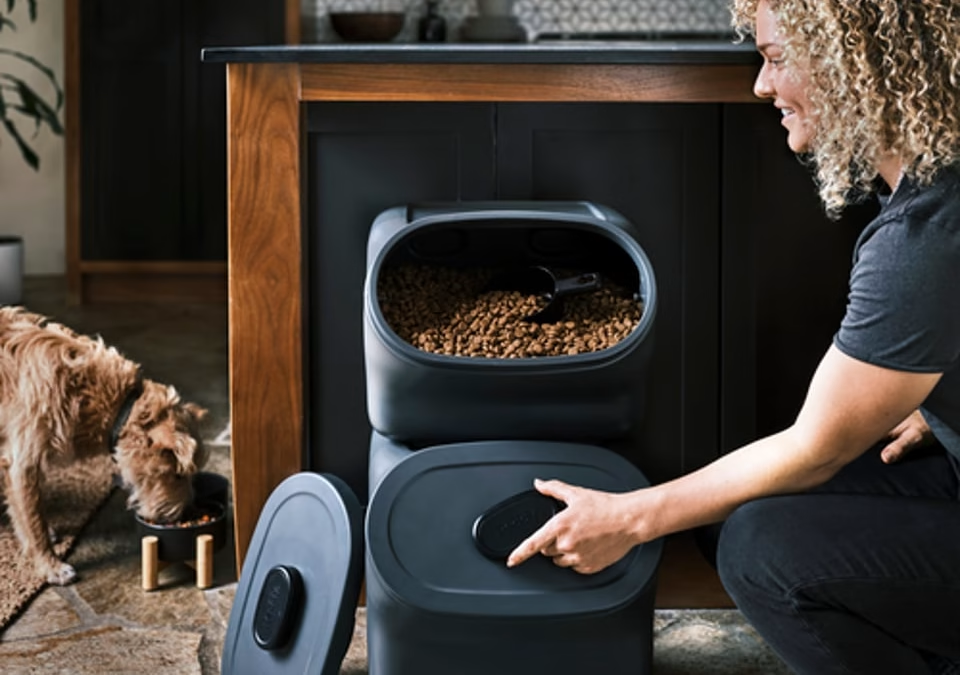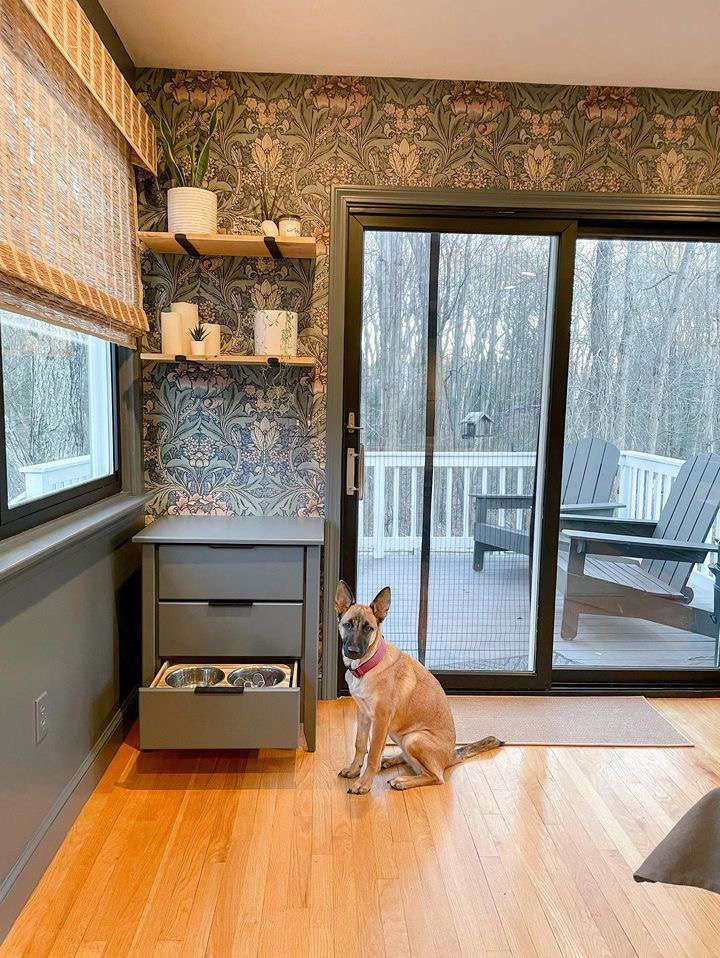| Getting your Trinity Audio player ready... |
As a pet parent, you know that feeding your furry friend is non-negotiable. But let’s be honest: the task of organizing and storing pet food can quickly become a challenge. Whether you have limited space, multiple pets with different diets, or just a giant bag of kibble sitting in the corner, it’s easy for the system to fall apart.
This comprehensive guide is here to help you conquer the chaos! We’ll give you practical advice on how to keep your pet’s food organized, fresh, and easily accessible. Plus, we’ll help you find solutions that actually look great and keep your home feeling stylish, not cluttered.
Step 1: Start with Intention
Before you buy a single container, a little planning goes a long way. This ensures the system you create is sustainable and truly works for your pets and your home.
- Understand Your Pet’s Dietary Needs: Consult your veterinarian to confirm the best type of food for your pet. Make a clear list of the necessary brands or formulas. If you have multiple pets, note their specific portion sizes and feeding schedules. This information is your blueprint for the entire organization project.
- Designate a Storage Area: Establish a specific location in your home for storing pet food—a cabinet, a pantry, or a closet works perfectly. The area should be cool, dry, and dark, away from direct sunlight. Ensuring this space is clean and well-ventilated is key to preventing mold and keeping pests away.
Step 2: Choose the Right Storage Solutions
A great container does two things: it keeps food fresh and it helps keep your home organized and odor-free. Consider these options based on your needs and your home decor:
- Airtight Containers are Essential: These are the gold standard for keeping food fresh and protecting it from pests. Look for BPA-free plastic, stainless steel, or glass with strong airtight seals. You can find stylish options that stack to save space, or even those with built-in wheels for easy maneuvering.
- Pet Food Storage Furniture: If you want a solution that truly blends in, consider furniture-style storage. These pieces can look like regular cabinets or side tables but have hidden compartments for food. Some even include built-in feeding stations, offering a beautiful, multi-functional piece.
- Space-Saving Dispensers: Wall-mounted pet food dispensers are a clever way to save floor space and make measuring easy. They are great for dispensing controlled portions directly into a bowl.
- Aesthetically Pleasing Containers: For items you want to keep visible, choose decorative containers made from materials like ceramic, metal, or wood. These can add to your home décor while being highly functional.
Step 3: Implement Systems for Daily Success
Once you have your containers, you need habits that keep the system running smoothly. Staying organized is all about the daily routines.
- Rotate Pet Food Stock (FIFO): Practice the “first in, first out” (FIFO) rule. Place newly-purchased food at the back and use the oldest food first. Regularly check expiration dates to ensure your fur babies consume only the freshest food possible, reducing waste.
- Use Portion Control Containers: These are highly useful for quickly and accurately measuring meals, especially if your pet is on a strict diet or prone to overeating. Label them with the pet’s name and portion size to avoid any confusion.
- Organize by Type and Brand: If you have multiple pets, avoid cross-contamination and confusion by organizing their food by type and brand. Use separate shelves, containers, or even colored labels to easily distinguish between the dog kibble, the wet cat food, or specialty formulas.
- Keep Feeding Supplies Close: Streamline your routine by storing supplies like bowls, scoops, and measuring cups right next to the pet food storage area. Having everything in one place makes mealtime much simpler.
- Track Your Inventory: Implement a simple pet food inventory system—whether it’s a note on the fridge or a quick list in your phone. This helps you track what you have, how much is left, and prevents the dreaded scenario of running out of your pet’s favorite food.
- Purchase Appropriate Quantities: Avoid the temptation to buy huge bags of food in bulk unless you know you can use them up before the expiration date. Purchasing smaller, more frequent quantities ensures maximum freshness and prevents your home from looking like a pet store warehouse!
Ready for a Functional and Fabulous Home?
Finding that perfect pet food storage solution is a total game-changer for keeping your pet’s meals fresh and your home clutter-free.
But hey, if you’re feeling a bit overwhelmed and need a helping hand with organizing your pet food or tackling any other challenging area in your home, I’m here to help!
I’m Taya from Just Organized by Taya, and I love helping pet parents conquer clutter and create a space that’s not only functional but also truly fabulous. Get in touch with me today, and together we’ll create an organized home that both you and your fur babies will absolutely adore!
- The Post-Christmas Reset: What to Do (and What to Skip) This Weekend - December 26, 2025
- The Week-Before-Christmas Survival Guide: Last-Minute Gift Organization Tips - December 18, 2025
- 7 Things in Your Kitchen Right Now That Need to Go - December 16, 2025



